Growing tomatoes at home can feel like a daunting task, right? But what if I told you that with a few clever tricks and DIY hacks, you could be harvesting juicy, sun-ripened tomatoes from your own backyard in no time? Forget those bland, store-bought tomatoes – we’re talking about flavor explosions that will elevate your salads, sauces, and sandwiches to a whole new level!
The history of cultivating tomatoes is fascinating, stretching back to the Aztecs and Incas. These cultures recognized the potential of this vibrant fruit, and now, centuries later, we can enjoy the fruits (literally!) of their labor. But let’s be honest, sometimes getting those perfect tomatoes feels like a battle against pests, diseases, and unpredictable weather. That’s where our DIY solutions come in!
Why do you need these tricks? Because growing tomatoes at home shouldn’t be a struggle! It should be a rewarding and enjoyable experience. Whether you’re a seasoned gardener or a complete beginner, these simple, cost-effective hacks will help you overcome common challenges, maximize your yield, and ensure you’re enjoying the most delicious tomatoes possible. I’m excited to share my favorite tips and tricks with you, so let’s get started and transform your garden into a tomato paradise!
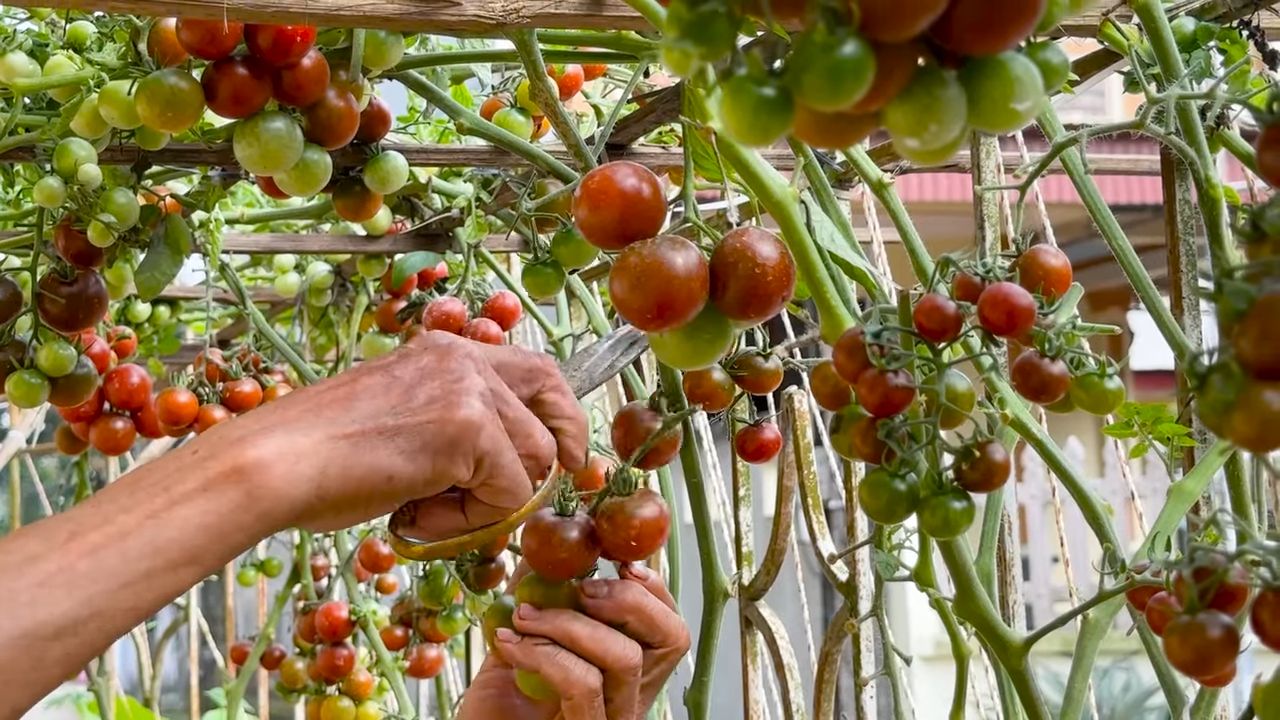
Growing Tomatoes in Your Own Garden: A Step-by-Step Guide
Hello dear garden friends! I am thrilled to take you on a journey into the world of tomato growing today. There is hardly anything more satisfying than harvesting a juicy, sun-ripened tomato from your own garden. And believe me, it’s not as difficult as you might think! I’ll show you how you can grow your own tomatoes with a few simple steps and a little patience. Let’s get started!
The Preparation: Everything You Need
Before we begin, we should make sure we have everything necessary on hand. Here is a list of the things you will need for growing tomatoes:
- Tomato seeds: Choose varieties that you enjoy and that are suitable for your climate. There are countless varieties, from small cherry tomatoes to large beefsteak tomatoes.
- Seed starting mix: This is low in nutrients and loose, ideal for seed germination.
- Seed starting pots or trays: Small containers in which the seeds are started.
- A dibber or a spoon: For carefully separating the seedlings.
- Larger pots or a garden bed: For the tomato plants when they get bigger.
- Tomato fertilizer: Special fertilizer for tomatoes that is rich in potassium.
- Stakes or supports: To support the tomato plants.
- A watering can or garden hose: For watering the plants.
- Patience and love: The most important things of all!
Sowing: The Start of a Tomato-Rich Life
Sowing is the first step on the path to your own tomatoes. I usually start this in March or April, depending on when the temperatures allow.
- Prepare seed starting pots: Fill the seed starting pots or trays with seed starting mix. Lightly press the soil down.
- Sow seeds: Place one to two seeds per pot on the soil. Cover the seeds with a thin layer of soil (approx. 0.5 cm / 0.2 inches).
- Water: Moisten the soil gently with a spray bottle or a watering can with a fine rose. The soil should be moist, but not wet.
- Keep warm: Place the seed starting pots in a warm, bright place. A temperature of 20-25°C (68-77°F) is ideal for germination. a mini-greenhouse or a windowsill over a heater are good options.
- Keep moist: Make sure the soil always stays moist. Spray it with water as needed.
- Be patient: Germination usually takes 7-14 days.
Pricking Out: Giving the Little Plants More Space
As soon as the tomato seedlings have developed their first true leaves (besides the cotyledons), it’s time for “pricking out.” This means we separate the small seedlings and move them into larger pots so they have more space to grow.
- Preparation: Fill larger pots (approx. 8-10 cm / 3-4 inches in diameter) with tomato soil.
- Gently lift out the seedlings: Carefully loosen the seedlings from the seed starting mix with a dibber or a spoon. Be careful not to damage the roots.
- Transplant: Place each seedling into its own pot. The seedlings can be planted a little deeper than before, up to just below the first leaves. This encourages root formation.
- Press down: Lightly press the soil down around the seedlings.
- Water: Water the seedlings gently.
- Bright location: Place the pricked-out seedlings in a bright, but not too sunny, location.
The Care: Ensuring the Tomatoes Thrive Magnificently
After pricking out, the real care of the tomato plants begins. Here are some important points you should consider:
- Watering: Tomato plants need regular water, especially on hot days. It’s best to water in the morning or evening so the water doesn’t evaporate as quickly. Avoid watering the leaves, as this can promote fungal diseases. Water directly at the roots.
- Fertilizing: Tomatoes are heavy feeders and need sufficient nutrients. Start fertilizing about two weeks after pricking out. Use a special tomato fertilizer that is rich in potassium. Fertilize regularly, preferably once a week.
- Pruning side shoots (Suckering): Pruning the suckers is an important step to achieve a bountiful harvest. This involves removing the side shoots (suckers) that form in the leaf axils. These shoots unnecessarily drain the plant’s energy and prevent the fruits from ripening properly. Simply break off the suckers with your fingers while they are still small.
- Supporting: Tomato plants become very heavy over time, especially when they bear a lot of fruit. Therefore, it’s important to support them with stakes or trellises. Tie the plants loosely to the stakes so they don’t break.
- Ventilation: Ensure good ventilation for the plants, especially if you are growing them in a greenhouse. Good air circulation helps to prevent fungal diseases.
- Protection from diseases and pests: Tomato plants can be affected by various diseases and pests. Watch for signs like yellow leaves, spots, or holes. If necessary, you can use biological plant protection products.
Planting Out: Off to the Outdoors!
Once the tomato plants are large enough and the temperatures allow (after the last frost in mid-May, known as the “Ice Saints” in Germany), they can be planted outdoors.
- Hardening off: Before you plant the plants outdoors, you should harden them off for a few days. Place them outside during the day and bring them back in at night. This way, they slowly get used to the new conditions.
- Choose a location: Choose a sunny, sheltered spot for your tomato plants. The soil should be loose and nutrient-rich.
- Prepare planting holes: Dig planting holes that are slightly larger than the pots the plants are in.
- Planting: Carefully place the plants in the planting holes. The plants can be set a little deeper than before, up to just below the first leaves.
- Press down: Lightly press the soil down around the plants.
- Watering: Water the plants thoroughly.
- Install supports: Install the stakes or trellises immediately.
The Harvest: The Reward for Your Hard Work
After all the work and patience, the time has finally come: the tomatoes are ripe and can be harvested!
- Recognizing ripeness: Ripe tomatoes have an intense color and give slightly when gently pressed.
- Harvesting: Pick the tomatoes carefully. Don’t leave them on the plant for too long, as they might split.
- Enjoy: Enjoy your homegrown tomatoes! They taste best fresh from the vine.
Additional Tips and Tricks
Variety Selection: Inform yourself about the different tomato varieties and choose ones that are suitable for your climate and needs. There are countless varieties, from small cherry tomatoes to large beefsteak tomatoes.
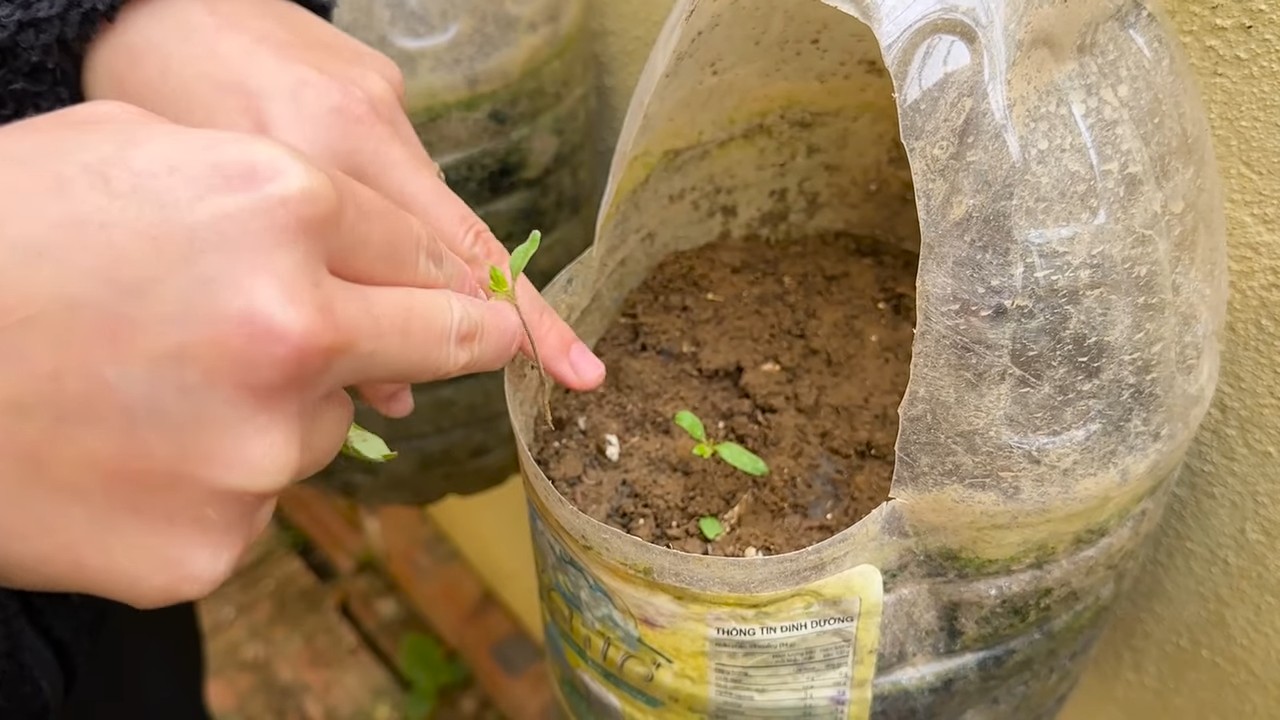
Conclusion
So, there you have it! Growing tomatoes at home, especially using our simple DIY trick, is more than just a gardening project; it’s an investment in flavor, freshness, and a deeper connection to your food. Forget those bland, store-bought tomatoes that lack the vibrant taste of summer. With a little effort and our easy-to-follow method, you can cultivate a thriving tomato patch bursting with juicy, sun-ripened goodness right in your own backyard, balcony, or even windowsill.
This DIY approach isn’t just about saving money (though that’s certainly a perk!). It’s about control. You get to choose the variety of tomato that best suits your taste, whether it’s the classic beefsteak, the sweet cherry tomato, the tangy Roma, or an heirloom variety bursting with unique character. You also control the growing environment, ensuring your plants receive the optimal amount of sunlight, water, and nutrients, free from harmful pesticides and chemicals.
But the real magic lies in the taste. There’s simply no comparison between a homegrown tomato, picked at its peak ripeness, and one that’s been shipped across the country. The flavor is richer, more intense, and utterly unforgettable. Imagine slicing into a perfectly ripe tomato, the juices running down your chin, and savoring the explosion of sweet and tangy flavors. That’s the reward that awaits you when you embrace the joy of growing tomatoes at home.
Don’t be afraid to experiment! Try different soil mixes, fertilizer combinations, or even companion planting techniques to see what works best for your specific environment. Consider adding basil or marigolds near your tomato plants to deter pests and enhance their growth. You can also explore different training methods, such as staking or caging, to support your plants and maximize their yield.
And remember, growing tomatoes at home is a journey, not a destination. There will be challenges along the way, but don’t let them discourage you. Learn from your mistakes, adapt your approach, and celebrate your successes. The satisfaction of harvesting your own delicious tomatoes is well worth the effort.
We encourage you to give this DIY trick a try and experience the joy of growing your own tomatoes. Share your experiences with us in the comments below! We’d love to hear about your successes, your challenges, and any variations you’ve tried. Let’s create a community of tomato-growing enthusiasts and share our knowledge and passion for this amazing fruit. So, grab your seeds, get your hands dirty, and get ready to enjoy the taste of summer all season long!
Frequently Asked Questions (FAQ)
What are the best tomato varieties to grow for beginners?
For beginners, some of the easiest and most rewarding tomato varieties to grow include cherry tomatoes (like ‘Sungold’ or ‘Sweet Million’), Roma tomatoes (great for sauces), and early-maturing varieties like ‘Early Girl’. These varieties are generally more disease-resistant and tolerant of less-than-perfect growing conditions. They also tend to produce fruit relatively quickly, which can be encouraging for new gardeners. Consider your local climate and choose varieties that are known to thrive in your area. Local nurseries are a great resource for finding regionally appropriate tomato plants.
How much sunlight do tomato plants need?
Tomato plants are sun-loving creatures and require at least 6-8 hours of direct sunlight per day to thrive. Without sufficient sunlight, they will produce fewer fruits and may be more susceptible to diseases. If you’re growing tomatoes indoors, supplement with grow lights to ensure they receive adequate light. When choosing a location for your tomato plants, select a spot that receives full sun throughout the day, ideally with morning sun to help dry the leaves and prevent fungal diseases.
What kind of soil is best for growing tomatoes?
Tomatoes prefer well-draining soil that is rich in organic matter. A slightly acidic soil pH (around 6.0-6.8) is ideal. Amend your soil with compost, aged manure, or other organic materials to improve its fertility and drainage. Avoid heavy clay soils, as they can become waterlogged and suffocate the roots. If you have clay soil, consider growing your tomatoes in raised beds or containers with a well-draining potting mix.
How often should I water my tomato plants?
Water tomato plants deeply and regularly, especially during hot, dry weather. Aim to water at the base of the plant to avoid wetting the leaves, which can promote fungal diseases. The frequency of watering will depend on the weather, soil type, and size of the plant. Check the soil moisture regularly by sticking your finger into the soil about an inch deep. If the soil feels dry, it’s time to water. Avoid overwatering, as this can lead to root rot.
What are some common tomato plant problems and how can I prevent them?
Some common tomato plant problems include blossom end rot (caused by calcium deficiency), fungal diseases (like early blight and septoria leaf spot), and pests (like aphids and tomato hornworms). To prevent these problems, ensure your soil is well-draining and rich in calcium, water at the base of the plant, provide good air circulation, and inspect your plants regularly for pests. Use organic pest control methods, such as insecticidal soap or neem oil, to control pests. Consider using disease-resistant tomato varieties to minimize the risk of fungal diseases.
How do I know when my tomatoes are ripe?
The color of the tomato will change from green to its mature color (red, yellow, orange, etc.), depending on the variety. The tomato should also feel slightly soft to the touch but not mushy. Gently twist the tomato from the vine; if it comes off easily, it’s ripe. The aroma of a ripe tomato is also a good indicator of ripeness. It should have a sweet, tomatoey smell.
Can I grow tomatoes in containers?
Yes, you can absolutely grow tomatoes in containers! Choose a large container (at least 10 gallons) with drainage holes. Use a high-quality potting mix and provide adequate sunlight and water. Dwarf or determinate tomato varieties are often better suited for container growing, as they tend to be more compact. Be sure to fertilize your container-grown tomatoes regularly, as the nutrients in the potting mix will be depleted over time.
What is the best way to fertilize tomato plants?
Tomato plants are heavy feeders and benefit from regular fertilization. Use a balanced fertilizer (e.g., 10-10-10) at planting time and then side-dress with a fertilizer higher in phosphorus (e.g., 5-10-5) when the plants begin to set fruit. You can also use organic fertilizers, such as compost tea or fish emulsion. Follow the instructions on the fertilizer label and avoid over-fertilizing, as this can damage the plants.
How do I prune tomato plants?
Pruning tomato plants can improve air circulation, reduce disease, and encourage fruit production. Remove suckers (the small shoots that grow between the main stem and the branches) to direct the plant’s energy towards fruit production. You can also remove yellowing or diseased leaves. Determinate tomato varieties generally require less pruning than indeterminate varieties.
What are some good companion plants for tomatoes?
Companion planting can help deter pests, attract beneficial insects, and improve the overall health of your tomato plants. Some good companion plants for tomatoes include basil, marigolds, onions, garlic, carrots, and parsley. Avoid planting tomatoes near brassicas (like cabbage and broccoli) or fennel, as they can inhibit tomato growth.

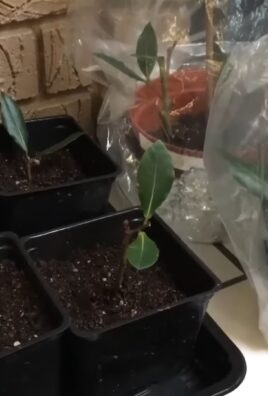
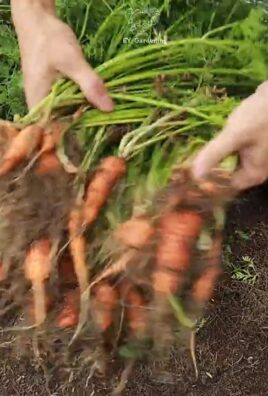
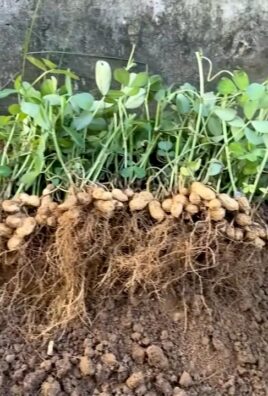
Leave a Comment